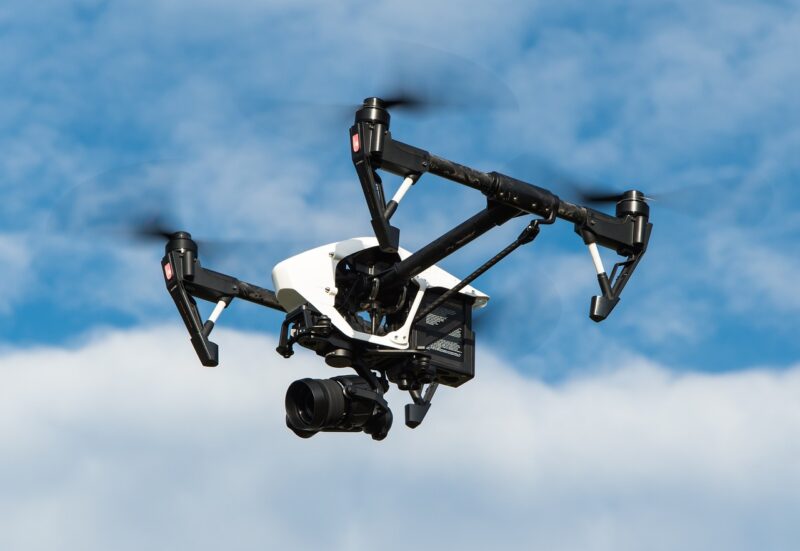
In the rapid evolution of military technology, one of the most pressing concerns is the rise of autonomous weaponry. These systems, often referred to as lethal autonomous weapon systems (LAWS), have the potential to reshape modern warfare, but they also raise significant ethical, legal, and security dilemmas. As nations invest heavily in defense technology, understanding the implications of these innovations becomes critical for policymakers, military leaders, and civilians alike.
1. What is Autonomous Weaponry?
Autonomous weaponry refers to systems that can make decisions for themselves, particularly in selecting and engaging targets without human intervention. This capability can range from drone strikes to robotic ground units equipped with advanced algorithms and artificial intelligence (AI).
While remote-controlled systems still rely on human operators, autonomous systems operate independently based on pre-programmed criteria or machine learning algorithms. They can process vast amounts of data and make quick decisions, appealing attributes in high-pressure combat scenarios.
2. The Evolution of Military Technology
The concept of autonomous weaponry is not entirely new, but recent advancements in AI, machine learning, and sensor technology have propelled its development. Initially, military technology focused on enhancing traditional weapon systems with automation; today, it pushes the boundaries with systems capable of independent operation.
Key advancements include:
- Drones: Initially used for surveillance, drones like the MQ-9 Reaper have evolved to deliver weaponry autonomously based on programmed parameters, raising the stakes for remote military engagement.
- Robotics: Ground units capable of navigating difficult terrains and engaging targets autonomously can significantly impact ground warfare. Technologies such as Boston Dynamics’ Spot and other robotic systems are increasingly integrated into military operations.
- Cyber-augmented Warfare: Autonomous systems combined with cyber capabilities can outthink human adversaries, providing an edge on the battlefield where cyber warfare and physical engagement converge.
The shift towards autonomy reduces the time taken between data collection and engagement, potentially increasing strike effectiveness but also raising alarms about ethical decision-making in warfare.
3. Ethical Concerns Surrounding Autonomous Weapons
The rise of autonomous weaponry presents significant ethical challenges that demand scrutiny from governments and the public alike. Some of the primary concerns include:
- Accountability: In the event of unintended casualties or war crimes, determining responsibility becomes challenging. If a drone autonomously engages a target, is accountability placed on the operators, the developers, or the weapon itself?
- Moral Decision-Making: Autonomous systems lack human empathy and can make decisions based solely on data analysis. This raises questions about whether machines should have the power to take lives and under what circumstances it is deemed acceptable.
- Escalation of Conflict: The use of autonomous weapons may lower the threshold for initiating conflicts, as political leaders could perceive a diminished risk when casualties are minimized through automation. This can lead to an arms race in LAWS, potentially escalating conflicts in previously unthinkable ways.
These ethical considerations necessitate a framework for regulating the development and deployment of autonomous weaponry in warfare.
4. Legal Implications of Autonomous Weapons
The existing frameworks of international humanitarian law (IHL) struggle to keep pace with technological advancements. Major legal concerns include:
- Compliance with IHL: Autonomous weapons must adhere to the core principles of IHL, such as distinction, proportionality, and necessity. However, the lack of human judgment raises significant concerns about their ability to comply with these legal standards effectively.
- Human Oversight: The question of how much human oversight should be integrated into autonomous systems is critical. Some experts argue for maintaining a human-in-the-loop mechanism to ensure ethical decision-making, while others advocate for complete autonomy to adapt to combat dynamics quickly.
- New Regulations and Treaties: As technological capabilities evolve, policymakers may need to create new treaties governing the use of autonomous weaponry, alongside existing agreements on arms control and warfare ethics.
The conversation surrounding legal implications is still evolving, necessitating robust dialogue among legal scholars, technologists, and military officials.
5. Global Perspectives on Autonomous Weapons
Various nations are approaching the development and deployment of autonomous weaponry differently. Here are some perspectives from key players:
- United States: The U.S. government actively invests in LAWS, viewing them as a means to enhance national security and military effectiveness. However, there is ongoing debate regarding regulation and ethical use within military contexts.
- China: China is rapidly advancing its military AI technology, including autonomous weaponry. The lack of transparency regarding its development strategies raises concerns on a global scale, particularly among rival nations.
- European Union: The EU has shown caution regarding the deployment of autonomous weapons, advocating against the development of fully autonomous systems while promoting robust ethical frameworks to regulate their use in warfare.
- United Nations: There is an ongoing push at the UN to establish an international ban on lethal autonomous weapons, with several member states expressing concerns about their implications for global security and humanitarian law.
As nations explore the balance between technological advancement and ethical considerations, a consensus on autonomous weapons will be critical to future global security dynamics.
6. The Future of Autonomous Weaponry
Looking forward, the trajectory of autonomous weaponry will undoubtedly be pivotal in shaping the future of warfare. Future considerations include:
- Technological Advancements: As AI and machine learning continue to evolve, the capabilities of autonomous systems will become increasingly sophisticated, requiring continuous oversight and regulation to mitigate risks.
- Public Perception: The global public’s response to autonomous weapon systems will influence their development. Advocacy for transparency and ethical guidelines will play a vital role in shaping societal acceptance of these technologies.
- International Collaboration: The development of multilateral agreements and collaborative frameworks could help synchronize international regulations concerning the use of LAWS, ensuring responsible and ethical deployment in warfare.
Ultimately, addressing the rise of autonomous weaponry is a collective responsibility. Ensuring effective oversight, regulatory mechanisms, and ethical frameworks will be essential to prevent potential misuse and pave the way for technologies that align with humanity’s best interests.
Conclusion
As autonomous weaponry takes center stage in military strategy, it confronts society with profound challenges that intertwine technology with ethics, legality, and international security. Guarded optimism could chart the course for responsible adoption and oversight, ensuring that advancements in technology are harnessed for peace rather than destruction. Addressing these complexities early in development can help create a future where autonomous systems align with human values and humanitarian law.
In contemplating autonomous weaponry, the question remains: Will we create machines that enhance our security, or will we unleash threats that challenge the very fabric of morality in warfare? Only time will tell as we navigate these unchartered waters together.







